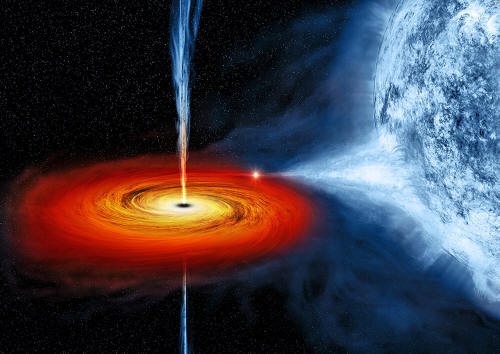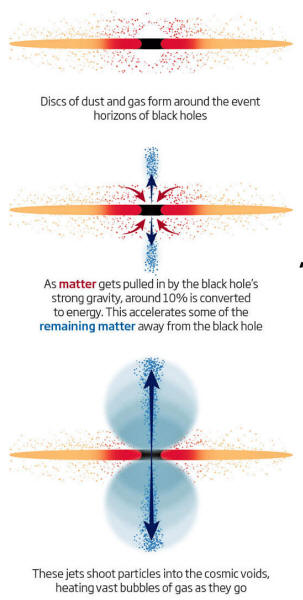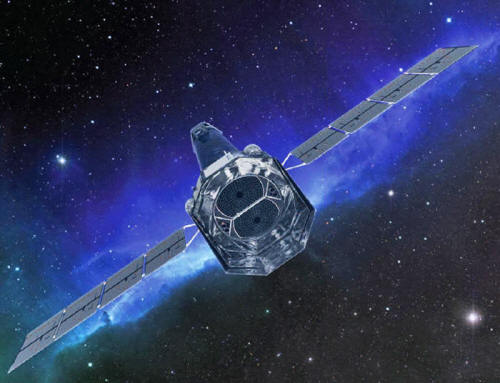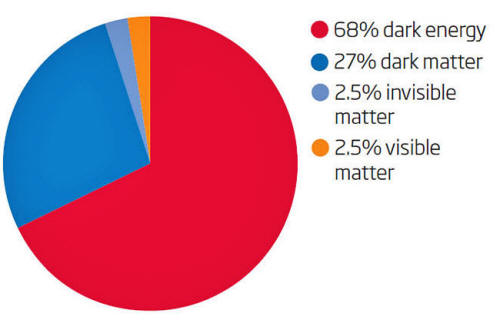|
half the universe into the
wilderness? half the universe's visible matter disappeared. The monstrous culprit might have been unmasked - and with it,
the future of our galaxy.
We've all been there.
You had it in your sight just a moment
ago, then you turn your back for a second and it's nowhere to be
seen. It's bad enough with car keys or the remote control. Just
imagine if you'd lost half the universe.
Our best estimates say it makes up only
about 5 per cent of all the stuff out there. Yet we're hard pressed
to find even half that.
Now suspicion has fallen on an unexpected culprit:
But these are black holes set not to
suck - but to blow.
Calculating the amount of mass needed to
keep the stars from flying off into the darkness revealed that only
a few per cent of each galaxy's total mass is visible to us. The
rest is labeled dark matter, a fundamentally different type of
substance that interacts with the ordinary universe only through
gravity.
As there is no process we know of by
which normal matter would change to dark matter, or vice versa, much
of modern cosmology assumes that ratio stays the same throughout
cosmic history.
Astronomers measure how much of both kinds of matter the universe has by mapping how background light is bent by its combined gravitational pull. But when they tot up the mass of all the stuff we can see - from stars to gas to black holes to planets - they get a surprising result.
The visible components make up closer to
one- tenth than one-fifth of the total mass.
The other half went missing.
No one really disputes that the matter must be out there somewhere.
But where is it? It's the largest
scavenger hunt in history, and the list of hiding places is as vast
as the universe itself.
Most of the universe is unimaginably cold: at around -270 °C it is less than 3 degrees above absolute zero. The slowly vibrating molecules here emit light at much lower frequencies - in the microwave range.
Over decades, we have slowly refined our
capability to pick up this light, but scanning these frequencies has
not turned up the missing mass.
All of that leads us to think that the missing matter probably emits X-ray light, burning brightly enough to pass unseen at around a million °C.
That's roughly the temperature of the
sun's corona, its fiery outermost layers.
At which point you might cry foul: we can see the corona.
That's true, but it is much more difficult to see than the sun's cooler surface, and it is the density of matter in the corona - as well as our proximity to the sun - that gives our detectors a fighting chance.
This provides another clue to the identity of the missing matter:
But where might such sparse-but-sizzling material be lurking?
Over the past few years, astronomers have begun to speculate that it could lie surprisingly close to home, in galaxies like our own Milky Way. With today's telescopes, we can account for nearly all the Milky Way's stars, as well as the gas and dust that float between them.
Assuming the usual dark matter ratio
holds true, these components should tally up to roughly 16 per cent
of the galaxy's mass. But even here we come up short. Half of the
normal matter that's supposed to be visible isn't.
As those streams of protons and neutrons, collectively known as baryons, fall in, they gain energy, raising their temperature and speed. At some point, the free-falling gas hits other material accreted thousands of years earlier.
This collision is so violent that it
stops the newly congregating material in its tracks, heating it up
to 2 million °C and propelling some of it away from the galaxy's
central regions. "Some bits of matter are cooling in the bath.
Others are going down the
drain"
And there, a competition of forces ensues.
The galaxy's gravity pulls the hot baryons back towards its centre while their high-energy jiggle pushes them away.
The consequence is they surround the galaxy in a diffuse halo of hot gas.
We might not be able to spot this halo directly, but we should be able to see its effects.
As light from distant galactic centers shines across the universe, the clouds of gas and dust it passes through absorb light of specific colors, revealing details about their temperature and composition.
For the last decade, Joel Bregman
and his colleagues have been staring at these cosmic searchlights
through our own galaxy in an attempt to identify just how much
invisible gas the Milky Way contains.
These hot haloes help solve the problem
of underweight galaxies, but Bregman calculates that this only
accounts for half of the baryonic matter needed to balance the
cosmic scales. And explaining the whereabouts of the rest is where
things start to get really interesting.
Bregman, for example, believes we could
find the rest within galaxies if we look even farther out from their
centers, in the distant regions where their gravitational pull fades
away.
We've ventured out far enough to account for all the missing matter already, she says - the only problem is that the measurements have been carried out by different teams who haven't had the chance to combine their results.
She's working on combining them now, and although she cautions that there will inevitably be some uncertainty in the final result, she believes there's a fair chance we can make things add up. Others are not convinced.
After all, galaxies themselves are a tiny fraction of the universe's volume.
Held together in vast clusters, they lie at the intersections of filaments that thread together to form what is known as the cosmic web. In the gaps between the cosmic web's filaments are voids billions of times emptier than any vacuum we can build on Earth.
Perhaps the missing matter is going to
turn up here.
give us our best shot
at spotting missing matter Searching for any matter hiding in these voids is fraught with complexity.
And it raises another thorny question:
That would require far more energy than
most galactic processes could generate.
For the past five years, Genel has been a core member of the Illustris project, one of the biggest and most complex universe simulations ever built.
Run on a global network of supercomputers, Illustris is the closest we can get to recreating the universe in the lab. Part of its power lies in allowing researchers to dictate the strength of any processes they like, even if the detailed physics remains blurry.
So you can, say, adjust the parameters
of your black hole behavior as you want, and see what sort of
universe emerges.
As material from the surrounding galaxy falls towards a black hole, nearly 10% is converted to energy. This is enough to accelerate some of the remaining particles very close to the speed of light, causing them to shoot out from the accretion disc in two jets in opposite directions.
The jets barrel through the galaxy, sharing that energy with the gas they encounter, says Genel.
Astronomers have seen exactly that
effect in galaxy clusters, as enormous bubbles of hot gas expand
away from the galactic centre.
In the first - and so far only - full Illustris run, the effect of black holes was so strong that some galaxy clusters lost nearly 90 per cent of their baryons.
It's an overestimation that the team has
been working over the past year to correct, recalibrating their
descriptions of black holes to make them more realistic, in line
with the observed figure of around 50%.
We already know that over the next few billions of years, galaxy clusters will drift farther and farther apart thanks to dark energy and the universe's ever-faster expansion. But if baryons are disappearing down the plughole faster than the faucet can replace them, these clusters might start crumbling apart as well.
Our universe's distant future is
starting to look rather bleak.
"Their gravitational fields turn black holes
into cosmic cannons"
Of course, a computer simulation can only tell you so much.
So what we'd really like to do is find out if this gas is actually there.
And while our current ability to see X-ray radiation across the universe is severely limited, our eyes are about to be opened. The next planned large-scale X-ray instrument should be able to see some of the diffuse gas at the million-Kelvin temperature range - provided it's where astronomers think it is.
The European Space Agency's Athena mission will be 100 times more sensitive than the X-ray telescopes currently in orbit. The telescope won't launch until 2028 at the earliest. And NASA has its own project in the works.
ARCUS is a telescope designed to
use the bright lights of distant galaxies to sample all of the hot
X-ray gas within the gravitational boundaries of many galaxies. If
it gets the go-ahead, it could be in operation by 2023.
Discovering them would be huge for cosmology.
Our understanding of galactic evolution depends on understanding what happens to baryon clusters, and our reconstructions of the early universe emerge from the way baryons behave.
Like a pair of headlights on a darkened country road, baryonic matter is the only visible sign we have of something much larger going on in the background.
This missing 2.5 per cent of the cosmos
could be our most valuable tool for understanding everything else.
|






